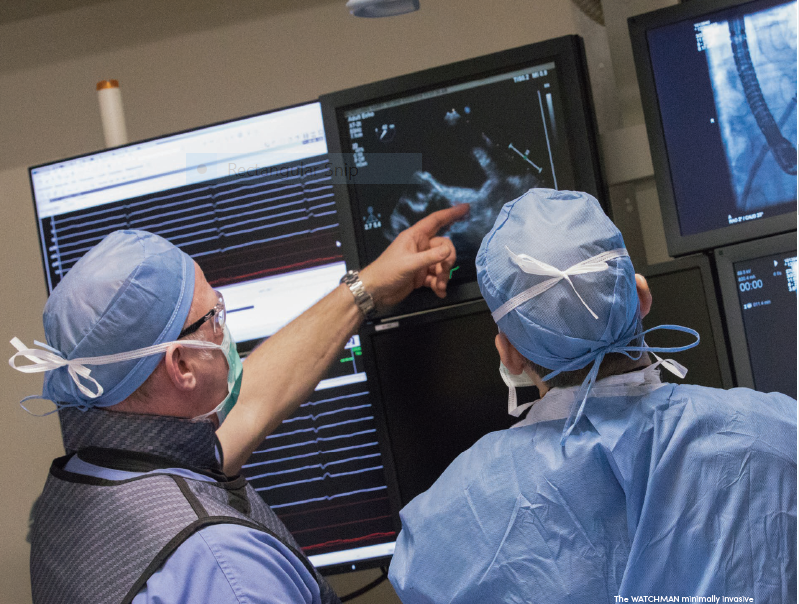Article
Atrial Fibrillation Without Blood Thinners: Permanent Device Reduces Clotting Risks

Atrial fibrillation (A-fib) can mean a lifetime of blood thinners for many patients. These medications reduce clotting risks that can lead to stroke, but they also come with challenges and potential bleeding concerns.
AHN doctors can eliminate blood thinners from some patients’ lives by implanting a unique device that permanently closes the heart’s left atrial appendage (LAA) and prevents blood clots from entering the bloodstream.
The WATCHMAN™ device is an FDA-approved therapy proven to effectively reduce the risk of stroke, without the risk of bleeding associated with the long-term use of blood thinners.1,2
96% of patients could discontinue using blood thinners at 45 days.3
A clinical trial, called the PINNACLE FLX 12-month study, followed 400 patients at 29 medical facilities in the U.S. Results showed that 96% of patients could discontinue using blood thinners at 45 days.3
“Some patients with A-fib are at an increased risk of stroke off blood thinners, and at an increased risk of bleeding on blood thinners,” said David Lasorda, DO, director of the Allegheny General Hospital Division of Interventional Cardiology. “The WATCHMAN is an ideal option for A-fib patients who cannot take long-term blood thinners.”
“The WATCHMAN is an ideal option for A-fib patients who cannot take long-term blood thinners.” — David Lasorda, DO
PLUGGING THE PROBLEM
A-fib is an irregular rhythm that comes from the top of the heart. Because blood isn’t pumped out of the heart normally, it’s easier for blood to pool in the LAA. Blood cells can stick together and form a clot. When a blood clot escapes from the LAA and travels to another part of the body, it can cut off blood supply to the brain and cause a stroke.
“More than 90% of clots found in the heart of A-fib patients are located in the left atrial appendage,” Dr. Lasorda explained. “So, we want to close that area of the heart to prevent embolization, and we can do that with the WATCHMAN.”
The WATCHMAN is a quarter-sized, marshmallow-shaped device that is collapsed into a sheath. A team that includes an interventional cardiologist and an electrophysiologist implant the WATCHMAN during a minimally invasive procedure.
Using imaging technology, the physician guides a catheter containing the device through a vein in the patient’s groin, explained Electrophysiologist Amit Thosani, MD, who also performs the procedure. Once it reaches the heart, the device is deployed in the left atrial appendage to permanently close it.
“Patients can often be discharged the same day as the procedure,” Dr. Thosani said. “They continue to take blood-thinning medication while heart tissue grows over the implant to permanently close off the appendage, and patients can typically stop taking blood thinners about 45 days after the procedure.”
They are prescribed aspirin and an antiplatelet medication called clopidogrel to take for five months. After that, patients continue taking aspirin on an ongoing basis.
“We have performed approximately 250 cases, and our patients are doing very well and are no longer taking blood thinners,” Dr. Lasorda said.
To refer a patient for WATCHMAN evaluation, call 412-359-6287.
References
- https://pubmed.ncbi.nlm.nih.gov/26088300/
- https://pubmed.ncbi.nlm.nih.gov/26627989/
- https://www.bostonscientific.com/en-EU/products/ laac-system/watchman-flx/clinical-evidence.html





